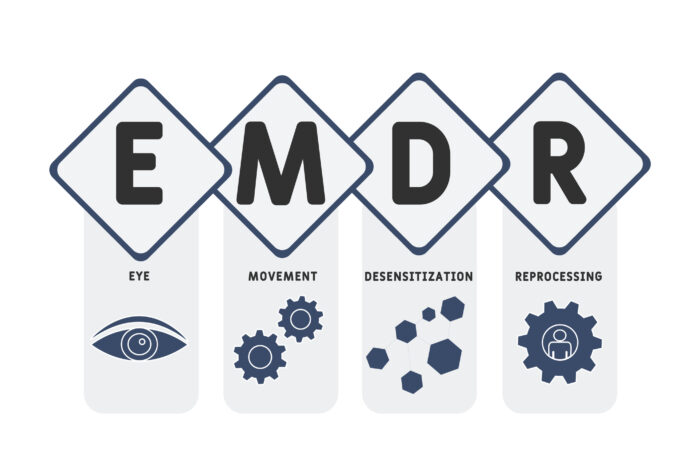By Megan Boardman, LCSW, ACADC, CCTP-II, EMDR-C, author of The EMDR Workbook for Trauma & PTSD
Your past experiences shape your brain’s many memory networks and teach you how to respond (whether positively or negatively) in future situations. Your belief system, self-esteem, and self-worth are also directly formed from these past experiences (Shapiro 2018).
Yet the idea of change and exposing your pain can feel damning or hopeless. The fear of reliving these past memories and emotions can keep you constricted in your day-to-day life. Maybe you don’t even know how or what to do to confront them. This is where EMDR comes in. It enables you to put to rest the painful emotional intensity of your negative past experiences. EMDR allows your brain to process your memories associated with past traumatic events by decreasing your brain’s response to unnecessary triggers. It enables distressing memories and sensations to get unstuck in the brain so that they no longer rule your life or thoughts (Shapiro 2018). Think of it as a technique that jump-starts your brain’s natural healing process.
Using EMDR skills to confront your trauma, you will gain clarity on your past experiences, learn about the nature of your perceptions and fears, and gain insight into the subconscious survival techniques that you have been clinging to in order to preserve yourself emotionally and physically.
EMDR was founded and researched using eye movements that mimicked our REM (rapid eye movements) during sleep. Many studies have shown that during the REM sleep cycle, your eyes move from right to left under your eyelids very rapidly. Research involving brain scans, sleep studies, and other methods has shown that during the REM cycle of sleep, your brain filters the experiences it had during the day. It stores what is useful (positive memories like an engagement or birthday) and discards what is meaningless (the outfit we wore to work or the drive home in the car). The REM cycle also allows the brain’s natural healing process to engage and help the brain repair itself.
Traumatic memories tend to get stuck in our brain and are stored in their own trauma memory network. Researchers found that if they used the same natural healing process that occurs during REM, while focusing on a traumatic memory, the brain will be able to access, process, and resolve these memories. Research has shown that EMDR helps your brain resolve upsetting memories, lowers your stress level, increases insight, improves self-worth and self-esteem, restores confidence, and allows the brain to function more wholly. This process allows for a decrease in PTSD symptoms (Shapiro 2018).
Although EMDR was first developed using eye movements, ongoing research and continued clinical findings have shown that a variety of bilateral stimulation methods (stimulating the right, then left side of the body, which is similar to what happens during REM) are just as effective as eye movements.
The techniques drawn from EMDR can help you address past experiences, understand and manage current triggers, and assist you with facing future anticipated challenges. By working with the past, present, and future (called a three-prong approach in EMDR), you will open new pathways in your brain that have been closed off or constricted. Your brain will be able to properly store what is useful in a way that is healing, helpful, and positive.
Megan Boardman, LCSW, ACADC, CCTP-II, EMDR-C, is a licensed clinical social worker who specializes in treating trauma and addiction. She owns and operates her own clinical practice, and provides supervision and consultation nationally and internationally to clinicians and businesses seeking ongoing trauma training. She provides clinical training in eye movement desensitization and reprocessing (EMDR), trauma, and addiction to mental and behavioral health professionals throughout the world, and is a proud training member of the PESI and Evergreen Certification family. She is a certified EMDR and CCTP II clinician, as well as an EMDR and CCTP II trainer and consultant through PESI and Evergreen Certifications. Megan also serves as an expert witness at the State and Federal level for her expertise in areas surrounding trauma.



 2024 Peace Playbook: 3 Tactics to Avoid Clashes with Your Partner
2024 Peace Playbook: 3 Tactics to Avoid Clashes with Your Partner